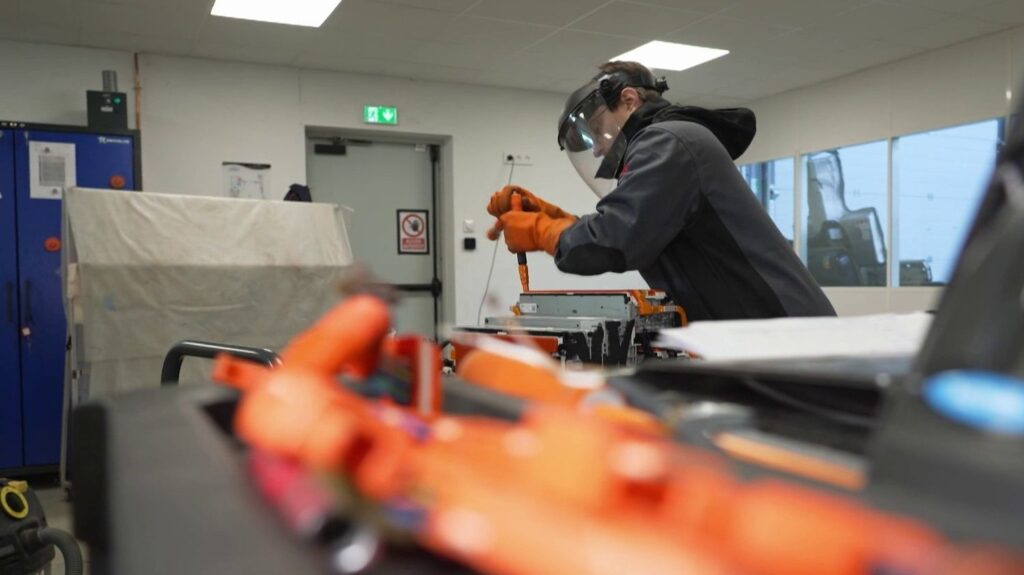Published
Reading time: 5min – Video: 9min
9 minutes
Gildas Minvielle, director of the Economic Observatory at the French Fashion Institute, was the guest of the morning of Franceinfo on Tuesday July 22.
Summer sales end on a disappointing assessment, Tuesday July 22. The turnover of the brands is down 5 % compared to the year 2024. The reason? Too much competition in the face of Giants of Fast Fashion and private sales. Guest of Leïla Salhi in the morning of Franceinfo, Gildas Minvielle, director of the Economic Observatory at the French Fashion Institute, notes a “very dynamic second hand“Despite a sector mainly”captured by the ultra fast fashion“.
This text corresponds to the transcription of part of the interview above. Click on the video to watch the maintenance in full.
France Télévisions: Several channels, today, ready-to-wear, are in difficulty. Gildas Minvielle, is that the end of a model?
Gildas Minvielle: I don’t believe. There is indeed a conjunction of several elements which has weakened, in particular, the mid -range, but not only. I think the mid -range is not dead. There are a lot of brands, including French brands, which manage to do well on the middle of the range. Simply, there are many actors. The competition is fierce and it is difficult to do well in a context where consumers have completely changed.
We often read that brands, especially French, have failed to take the web turn. What do you think? What can we blame them for and what advice could they be given?
It is true that we talked about this at the time of the closure of Camaïeu, at the end of 2022. It was a closure that marked us all in the fashion ecosystem. For example, Camaïeu had a fairly modest share of its sales devoted to e-commerce. I do not think that it is as decisive as that, but it is true as in one point, at the turn of the years 2015, many brands continued to open stores when it was probably more necessary to invest in e-commerce. It represents, according to the IFM barometer that we have just published, around 30 % of purchases in value in the first half of 2025. 30 %, indeed, this is very important.
Physical stores may put the key under the door, but online platforms have never been so well worn. According to the Observatory of the French Fashion Institute, the “Amazon, Shein, Temu” trio totals a quarter of clothing online sales. What is the consumer looking for today? What does it translate?
The consumer is complex. He wants a set of things. We are in an economic context that is not favorable. Many consumers are looking for first prices per necessity. When there is an outdoor shock, such as inflation or covid, fashion is part of the possibilities of adjustment variables in the household budget. Unfortunately, we regret it, because we rather defend the brands which are a little more premium and which possibly manufacture in France. But a large part of consumers are looking for low prices they have the opportunity to have with what is called ultra fast fashion, shein, Temu … but also the second hand. We must not forget it. The second hand is 11 % of purchases in value in the first half of France. It is very important. There is part of the market that is captured by this ultra fast fashion. Another by this second hand, which is very dynamic. And what remains of the cake for historical players, especially in the mid -range, has significantly reduced.
There is a need to create the desire too today. We were obviously talking about the price: the lower the prices, the more it works. But the case of brands like Sézane is interesting since it is the opposite approach. Internet first, the physical store then. What is the strategy behind?
You have to be good everywhere. You talked about this creation of envy, it is very important. It is a sector where creativity is important. You have to be good on the price, you have to be good on the value for money. This does not mean that it is only the low price; The value for money is a little more elaborate concept. And then, it is the image, the style, which is very important. It’s a bit difficult to measure because it is immaterial, but Sézane is quite good on this. There are other brands that we could have cited. The Saint James, for example, which make in Normandy. Armorlux, a bit next to Brittany. There are many companies like that have great performances; We talk about it less. But a figure that seemed interesting to me in the studies we have carried out: in 2024, there are about 15 % of the people we interviewed who bought clothes more expensive than usual. It is not linked to inflation, since inflation calmed down in 2024. So there is still a part of the consumers who seek “less but better”, that is to say a little less purchases, but we will look for quality. Because fashion is often criticized in relation to quality, which has diminished over the years. There is still a part that bought more and which is looking for this quality.
Click on the video to watch the maintenance in full.

/2025/07/22/gildas-687f524fd2e7b205679751.jpg)

